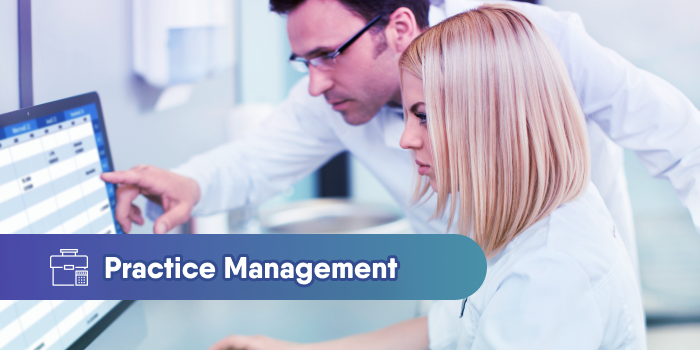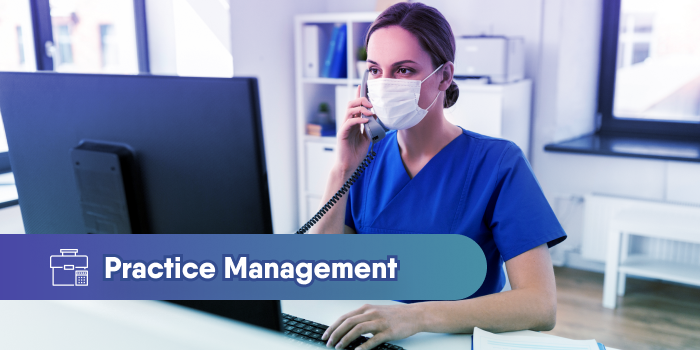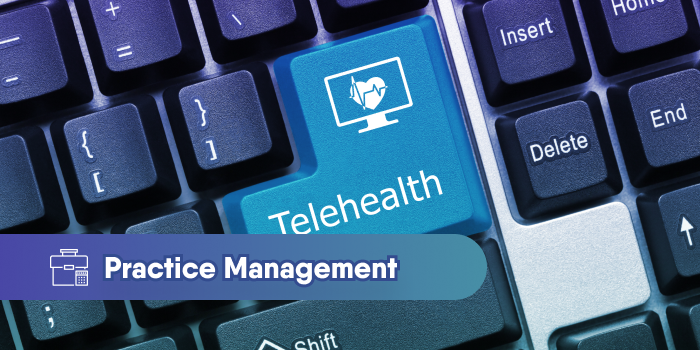Practice Management Technology Your Office Needs
Your medical practice needs practice management tools to help you improve healthcare delivery efficiency, boost patient satisfaction, and increase...

As healthcare providers strive to improve patient care quality and increase patient satisfaction, there are ten ways technology can help you create efficiency in your medical office.
Efficiency — achieving maximum productivity with minimum wasted effort or expense — is critical in a medical office. In addition to keeping your costs low and profits high, efficiency also contributes to a positive patient experience and increasing patient satisfaction scores.
Patients' dissatisfaction or complaints about their healthcare experiences may be related to a litany of office-related issues — long wait times, delayed test results, or long lead times for appointments.
Healthcare professionals (HCP) are well aware of how technology helps them create efficiencies in practice management and clinical care. From optimizing appointment booking and patient communications to collecting co-pays and issuing prescriptions, technologically advanced practice management software and other tools are here to stay.
Check out the ten ways technology creates efficiencies in medical offices today.
A well-designed and practical medical workflow enables HCPs, assistants, and office staff to work together, completing their various responsibilities and providing patient care.
Workflows are helpful, but individual and organizational weaknesses can easily bypass them, leaving gaps and holes in the practice even with the best intentions.
Technology innovations help overcome these gaps. The right software helps your workflows become super-efficient in most situations.
For example, practice management software (PMS) handles multiple day-to-day tasks, reducing the risk of forgotten tasks. These functions include administrative tasks, appointment scheduling, and billing, etc.
PMS platforms create efficiency in a medical office by automating tasks, minimizing errors, and optimizing processes.
Handling patient information is crucial to the success of your practice. The right providers and office staff need access to this information to provide continuous patient care. At the same time, this software must protect the privacy and security of patients’ private information. Electronic medical records (EMR) are key to this.
The Agency for Healthcare Research and Quality (AHRQ) defines EMR as "an electronic record of health-related information on an individual created, gathered, managed, and consulted by authorized clinicians and staff within one health care organization."
According to AHRQ, the EMR can provide substantial benefits to physicians, clinic practices, and health organizations. It can facilitate workflow and improve the quality of patient care and patient safety.
You can invest in software that easily integrates EMRs into existing PMS to create a seamless experience for your providers, office staff, and patients.
Communication is essential for providers and front office staff to deliver exceptional patient care. Members of various teams must be able to communicate with each other without interruptions and in real-time.
Internal communication tools help HCPs easily create a secure network or group belonging to one workflow or department, establishing a faster but flawless internal communication between doctors, nurses, and staff.
Secure and HIPAA-compliant messaging platforms enhance internal communications and allow all participants to exchange multimedia information in just a few clicks, and hasten decision-making.
An Integrated Health Information System (HIS) also enhances effective and optimized communications facilitating seamless workflows, quicker and more informed decision-making, and continuous patient care.
IT advancements have made interconnectivity between data systems possible and highly efficient, allowing fast and secure data collection, information sharing, and access.
With the convenience and speed that an integrated HIS can provide to the healthcare system, it is cost-effective and touted as a potential tool for health promotion.
Such technology has made the management and sharing of information between and within healthcare systems more efficient.
Two-way text messaging systems allow patients to communicate with your front desk securely. It is a simple and accessible communication method almost everyone is comfortable using.
Secure 2-way text messaging caters to patients’ communications preferences. This simple tool improves patient engagement and leads to fewer missed appointments and improved patient outcomes.
Text messaging saves your office and patients the need to call for an appointment or a simple query. Patients can now book, cancel and reschedule appointments with text messaging giving them complete control and flexibility over circumstances that require them to change schedules.
Automation is one of the most efficiency-generating technological functions for medical offices.
Process automation saves you time. Instead of posting workflow charts and reminders on your office walls and following up with your staff about their everyday tasks, automation creates reminders, tracks task completion, and often creates productivity reports.
PMS and other software used in medical practices allow for automatic alarms, reminders, and messages about upcoming appointment schedules, tasks, or office commitments.
Messaging platforms already allow for intuitive and interactive automated responses to anticipated patient questions via Artificial Intelligence (AI) or chat robots (chatbots).
HCPs can integrate software to align health insurance information with a patient’s medical records. This helps with accurate billing for services and rapid reimbursement. It saves medical offices from making multiple entries or seemingly endless phone calls to insurance companies to settle insurance reimbursements.
Secure text messaging and automated patient reminders are critical to reducing the volume of missed appointments in medical practice. The reduction of patient no-shows is one of the significant efficiencies technology creates in a medical office.
With the appropriate two-way text messaging and appointment reminder platforms, you can reduce patient no-shows dramatically.
Time, among other elements in life and work, is the most precious. Time saved is money spent on other equally critical resources in healthcare.
As technology creates efficiencies for medical offices, HCPs save more time from doing tasks manually by allowing software solutions to take over these tasks and complete them swiftly with higher efficiency.
A PMS, for example, automates most of the repetitive and redundant office functions and time-bound tasks for you, such as billing and payments, invoicing, claims, reimbursements, etc.
Your staff saves hours checking on patients’ insurance eligibility when your PMS can easily do this for you in seconds.
Integrating a HIPAA-compliant text-messaging platform with your PMS also saves you a lot of time from the routine of setting appointments. It can reduce up to 50% of phone calls volume and patient no-shows, allowing your staff to attend to more patients.
Lastly, technology has transformed payment transactions across all industries around the world. IT and digital banking innovations have allowed convenient and secure options for patients to settle payments electronically online - electronic fund transfers like ACH payments, digital wallet transactions, and payment links for “card not present” (CNP) payments, etc.
With contactless and cashless payment options, patients no longer have to be at your front desk to settle incurred fees during visits or virtual appointments. If they have to, it will just take a few seconds to swipe a debit or credit card or push confirmation buttons. Digital payments are mobile-friendly, that you can transact through a computer, smartphone, or tablet.
Technology-enhanced payment processes create efficiencies in medical offices such as having less or no foot traffic congestion, prompt and speed up payment cycles, automated invoicing processes with automatic billing reminders.
Undoubtedly, over time, HCPs have gathered ample information to identify what drives quality in care services and patient satisfaction - efficiency among others.
In response, technology has allowed for software development that helps healthcare systems create efficiencies in medical workplaces, especially during a public health emergency such as the COVID-19 pandemic.
With workflows becoming efficient, office productivity also increases, improving healthcare services and increasing patient satisfaction.

Your medical practice needs practice management tools to help you improve healthcare delivery efficiency, boost patient satisfaction, and increase...

Technology is one of the greatest allies of efficiency in the healthcare industry. It has reduced the number of daily manual processes, from patient...

Healthcare professionals (HCPs) consider finding a way to improve healthcare quality in the United States a critical undertaking to succeed in...